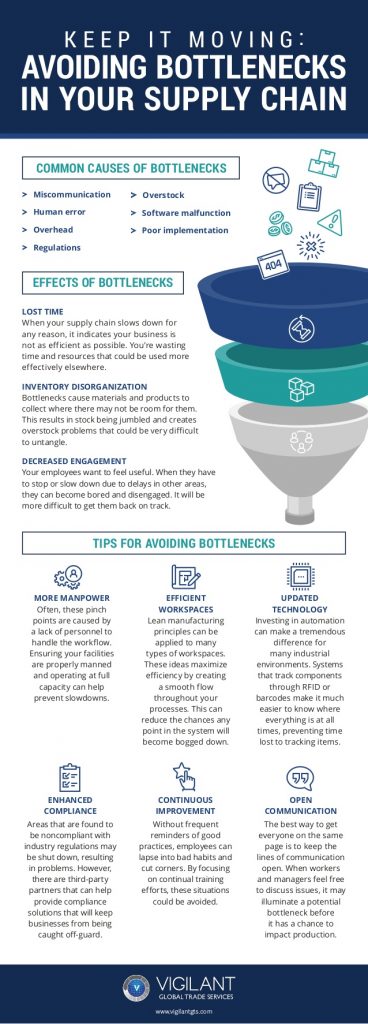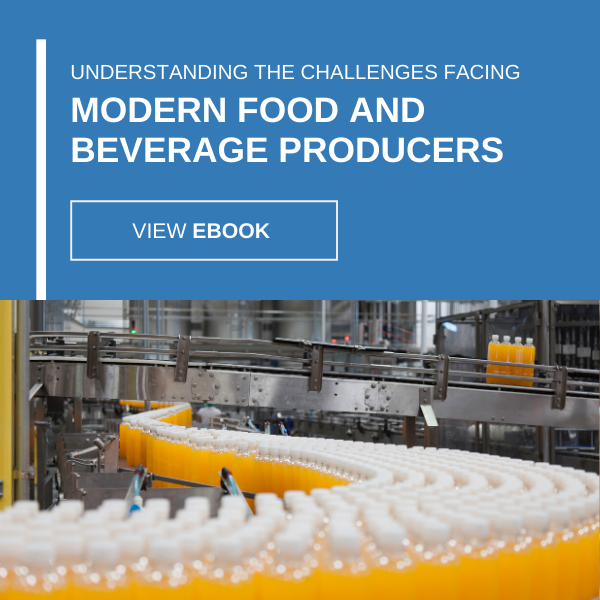
Uncork Manufacturing Bottlenecks for Optimized Production
In life, bottlenecks crop up from time to time; moments where we’re stuck and can’t push through a problem. Patience may be the only remedy. In the manufacturing sector, however, bottlenecks can be a serious drain on productivity, revenue, efficiency, and asset utilization.
What does a bottleneck mean in manufacturing terms?
When people think casually of “bottlenecks,” they might think of forced congestion, like traffic on a multi-lane highway pinched down to a single lane for construction or emergency reasons. Traffic would be an apt metaphor, as bottlenecks on the road and those in a manufacturing plant are both concerned with throughput and achieving continuous flow.
However, in manufacturing, bottlenecks have their own clear-cut definition as well. According to the Institute of Industrial and Systems Engineers, bottlenecks occur when:
- A process step exceeds 100 percent utilization
- Capacity drops below or equals takt time
- Capacity drops below or equals demand
To identify bottlenecks, plant managers ought to utilize operational data and tighten their focus on steps in assembly that meet these specifications or come close. However, seasoned plant employees and equipment operators may be able to sense and point out potential bottlenecks without crunching the numbers.
What do bottlenecks look like on the plant floor?
For some manufacturing processes, bottlenecks are easy to spot. For instance, if asset operators in a bottling facility – to continue with today’s theme – notice visible accumulation of goods clogging a labeler, chances are the labeler is the issue, so long as all other operations appear to be functioning to capacity.

“One common indicator of a bottleneck is inventory overabundance.”
Other times, bottlenecks are not as readily apparent, but misbehaving processes ancillary to production may clue plant managers into trouble elsewhere. One common indicator of a bottleneck is inventory overabundance. When manufactures have aligned inventory needs against demand properly, inventories should remain relatively lean. Materials overflow in that context, therefore, would signal capacity issues somewhere in production. All that’s left to do is hunt them down and sort them out.
How can manufacturers overcome bottlenecks?
Once plant managers locate their bottleneck, they must perform three basic functions to formulate a solution. First, they must temporarily reduce the capacity of the entire process, carefully watching how a bottleneck functions for any observable performance problems.
Second, upon gathering a few notions as to what may be creating a bottleneck, plant managers must then conduct root cause analysis on each. Root cause analysis involves tracing the conspicuous bottleneck issue back to its true catalyst. Perhaps it’s as simple as a mechanical failure, or maybe as comprehensive as accidental overproduction.
Finally, after arriving at the bottleneck’s root cause, plant managers should assess whether it is a long- or short-term concern. Long-term concerns may require organizational change to correct the issue once and for all, but may require scheduled maintenance or production downtime to finalize the fix.
Short-term concerns generally correct themselves with little to no intervention. However, in the meantime, plant managers may feel more secure in their operations by decentralizing capacity over multiple employees or machinery. That way, should an out-and-out failure occur, manufacturers minimize the effect of downtime on productivity.
Trade advisory consultants at Vigilant Global Trade Services, a turn-key solutions provider for every aspect of global trade management, configured a detailed infographic illustrating how to avoid bottlenecks in your supply chain:
Contact us today to learn more about how you can avoid manufacturing bottlenecks and optimize your operations.






